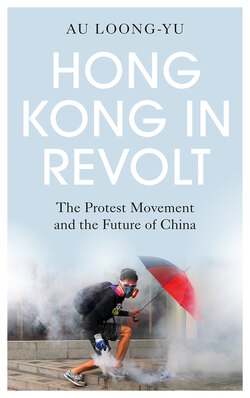Читать книгу Hong Kong in Revolt - Au Loong-Yu - Страница 19
На сайте Литреса книга снята с продажи.
2. Taking Off (June and July)
ОглавлениеOn 6 June more than two thousand lawyers and legal professionals took to the streets in silent protest against the bill. Little were they aware that in three days, on 9 June, one million people would heed the call of the Civil Front and take to the streets. Equally important, the day also brought back the youth. The number of participants came close to that of the movement that had emerged in solidarity with China’s democratic struggle in 1989. The Centre for Communication and Public Opinion Survey (CCPOS) found that on 9 June protesters under 29 years old accounted for 42.8 percent of the total.13 The young protesters were coming back en masse. The unexpected turnout encouraged everyone, first and foremost the young. The latter came back to the stage again on 12 June to besiege the LegCo building to stop the tabling of the bill (although by then the speaker had already postponed the meeting). This time it was chiefly their show. The same CCPOS survey showed that 68.4 percent of the siege participants were below 29 years old (see below). They tried to charge through the police barricades but were driven back with tear gas and rubber bullets, one of which blinded a teacher. Commonly, the yellow camp had never been supporters of physical clashes with police. Carrie Lam probably counted on this. The next day, however, it was obvious that the public was on the protesters’ side. Many people were angry about the police violence and the official characterisation of the ‘6.12’ action as a ‘riot’. This was also the time when the movement began to raise its second demand: to stop labelling protesters as ‘rioters’.
Carrie Lam felt the heat of the furious public and on 15 June she conceded by announcing that the extradition bill would be temporarily suspended. The next day two million people took to the streets, in effect telling Lam they wanted the bill gone for good, and that they were ready to tolerate low-intensity violence from the radical youth. Their reasoning went as follows: now that both Lam and her police force had become the puppets of Beijing and had violently cracked down on the people, wasn’t it logical and worth supporting when the young people, on their behalf, hit back at them? This strong sympathy again reasserted itself very soon after, when the radical youth broke into the LegCo building on 1 July and as Lam continued to refuse to have dialogue with the protesters. The ‘Yuen Long incident’ on 21 July, where members of organised crime syndicates, with the tacit consent of the police, attacked train passengers whom they believed to be protesters, hardened the yellow camp’s support for radical actions against the government. Now they thought that the young people were right from the very beginning when they repeatedly sent out warnings that Hong Kong was dying and that drastic measures had to be taken.
On the night of 21 June, radical youths went to the Liaison Office to spray graffiti on its wall. Some painted the derogative term for Chinese, Zi-naa, which Beijing would make use of in depicting the whole movement as anti-Chinese.
Lam had become the most hated person in the city, but the people’s consciousness now rose to a level where they were no longer satisfied with the pan-democrats’ call for her resignation. Having subsided after the defeat of the Umbrella Movement, the call for universal suffrage was increasingly raised again. From that moment onwards, the movement evolved from being defensive to one which was more offensive. When July ended, the movement had evolved far beyond its two demands of early June, adding another three to make up its ‘five demands’:
• Withdraw the extradition bill
• Stop labelling protesters as ‘rioters’
• Drop charges against protesters
• Conduct an independent inquiry into police behaviour
• Implement genuine universal suffrage for both the LegCo and the CE elections
It was these five demands, not the call for independence, as Beijing claimed, which united millions of people. In fact, a random telephone survey in October 2019 showed that only 11 percent of the population was for independence from China while 83 percent opposed it.14 In contrast the five demands had won the support of the vast majority of the population by the end of 2019.15
With the advance of the movement, even Carrie Lam’s ‘sincere apology’ on 18 June and her further announcement that ‘the bill is dead’ on 2 July could no longer satisfy the protesters.
